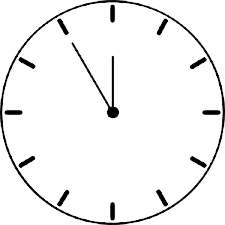In the realm of technology, every millisecond counts. Whether you’re a gamer seeking seamless performance, a programmer striving for optimal code execution, or a system administrator ensuring smooth operations, timer resolution plays a crucial role.
But is there a standard timer resolution that reigns supreme in the quest for efficiency? Let’s delve into this topic to uncover the optimal timer resolution and its significance across various domains.
Table of Contents
Understanding Timer Resolution:
Timer resolution refers to the granularity of a system’s time measurement. It determines how often the system updates its internal clock and influences the accuracy and precision of time-sensitive tasks. A finer resolution allows for precise timing but may consume additional system resources.
The Quest for Optimal Timer Resolution:
Finding the optimal timer resolution is akin to balancing precision and resource utilization. While a higher resolution offers finer granularity, it can lead to increased CPU overhead. Conversely, a lower resolution conserves resources but sacrifices accuracy. Hence, determining the optimal timer resolution entails considering the specific requirements of the task at hand and the capabilities of the underlying hardware.
Factors Influencing Optimal Timer Resolution:
Application Requirements: Different applications demand varying levels of precision. Real-time systems such as financial trading platforms or audio/video processing necessitate high-timer resolutions to maintain synchronization and responsiveness.
Hardware Capabilities: The hardware architecture of a system dramatically influences its timer resolution. Modern processors and operating systems often support high-resolution timers, enabling finer granularity without significant overhead.
Performance Impact: Balancing timer resolution with performance overhead is crucial. For resource-intensive applications, opting for a lower resolution may be preferable to avoid excessive CPU utilization and latency.
Common Timer Resolutions:
1 ms Resolution: Widely used in mainstream computing environments, a 1 ms timer resolution balances precision and resource efficiency. It provides sufficient accuracy for most applications without imposing substantial overhead.
0.1 ms Resolution: In scenarios demanding higher precision, such as gaming or multimedia production, a 0.1 ms resolution may be preferred. This finer granularity ensures smoother gameplay and seamless multimedia rendering.
Microsecond Resolutions: Microsecond-level timer resolutions are employed for specialized tasks requiring ultra-low latency. These resolutions, typically in microseconds to nanoseconds, are essential in high-frequency trading and scientific computing.
Impact of Timer Resolution on Performance:
The choice of timer resolution directly impacts system performance and responsiveness. An excessively high resolution can monopolize CPU resources, leading to degraded performance and increased power consumption. Conversely, a lower resolution may introduce timing inaccuracies, compromising the integrity of time-sensitive operations.
Best Practices for Optimizing Timer Resolution:
Tailor to Application Needs: Align timer resolution with the specific requirements of the application. Consider the trade-offs between precision and performance overhead to strike an optimal balance.
Utilize High-Resolution Timers: When necessary, leverage the capabilities of modern hardware and operating systems to access high-resolution timers. This ensures finer granularity without sacrificing efficiency.
Monitor Resource Utilization: Regularly monitor CPU usage and system performance to assess the impact of timer resolution adjustments. Optimize resolution settings based on observed performance metrics.
Conclusion
The choice of timer resolution plays a pivotal role in the pursuit of efficiency and performance optimization. While there is no one-size-fits-all solution, understanding the trade-offs between precision and resource utilization is critical to determining the optimal timer resolution. Organizations can unlock enhanced performance and responsiveness across diverse computing environments by aligning resolution settings with application requirements and leveraging high-resolution timers where necessary.
